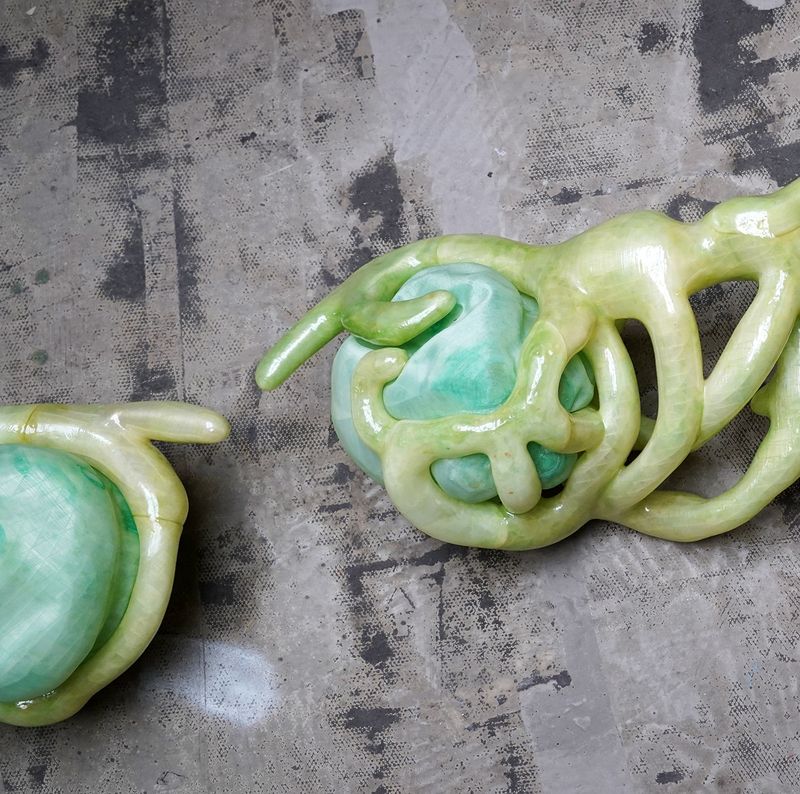Colouring 3D prints with fabric dye
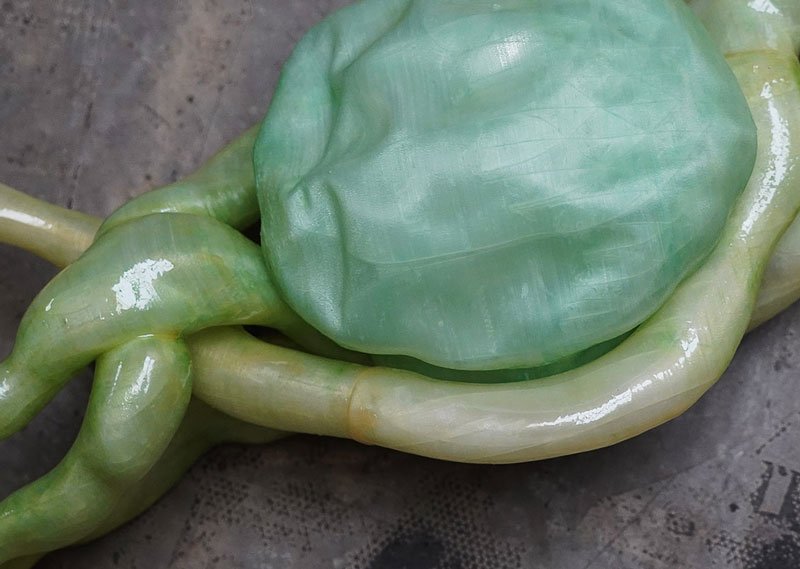
My project focussed on lichen- an interspecies collaboration of fungus and algae bodies, living symbiotically and co-creating the lichen form. I was interested in lichen pigments. From a branching line of research, I’d been looking into the yellow pigment, parietin, that the fungal partner makes in common yellow starburst lichen. The fungus expresses parietin specifically to protect the algal partner from solar damage. I was interested in considering this as a chromatic gesture of care.
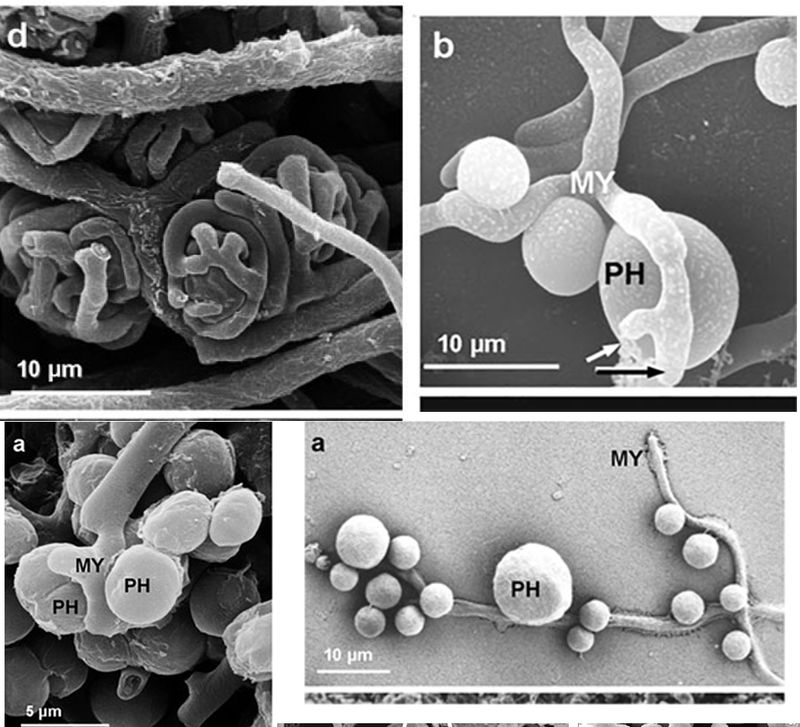
Scanning electron microscopy images of lichen showing the fungal hyphae and spherical algal bodies.
I considered extracting parietin from lichen (I joined a crazy Facebook group of folks who dye wool with lichens and fungi)- and I found out it’s a complex extraction process that kills the lichen in the process, so instead I colour matched the pigment with a commercial fabric dye.
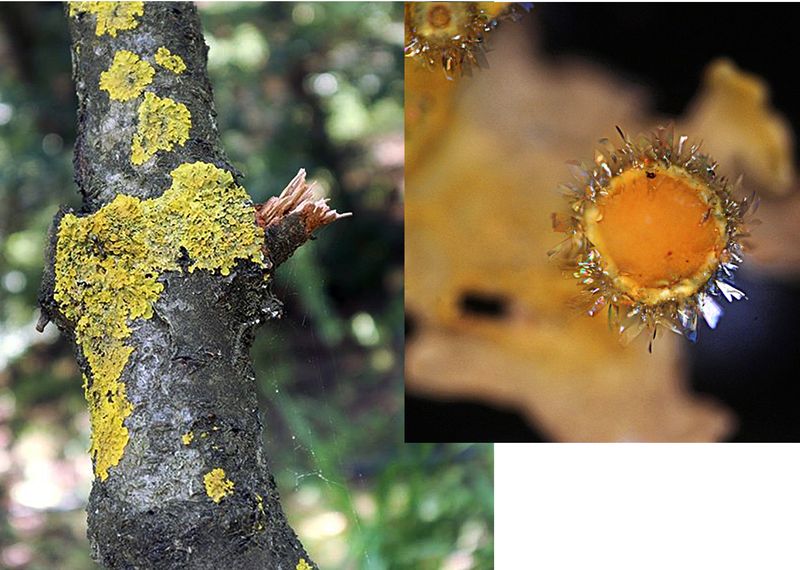
Lichens and parietin
PLA is very hard to dye and it resists water soluble pigment, so I experimented with the traditional wool dying approach of mordanting before dying. A mordant is a chemical that helps dye molecules attach to non-protein substrates. It’s often an aluminium hydroxide based chemical. So I soaked the PLA printed parts in the mordant for a day or so, bought a huge baby bath and a portable water heater unit and then dyed the PLA parts in fabric dye.
It made a fascinating organic looking surface.
The trick was the water temperature- it needed to be heated to just below the temperature at which the PLA softened, to take up the dye. So I kept the water between 38-48 deg C, depending on the fragment size, printed wall thickness and surface complexity. I kept turning the heater on and off to keep the batch at a sufficient temperature. The 3D prints floated in the bath so I had to keep rotating each part and pushing them under the water surface. It took around 20 minutes for each batch after which I had to do a dye recharge to finish.
I then glued all the parts together. Where there were gaps at the joints I filled them with PLA filings mixed with more glue to try to visually camouflage the joint mark (with limited success).
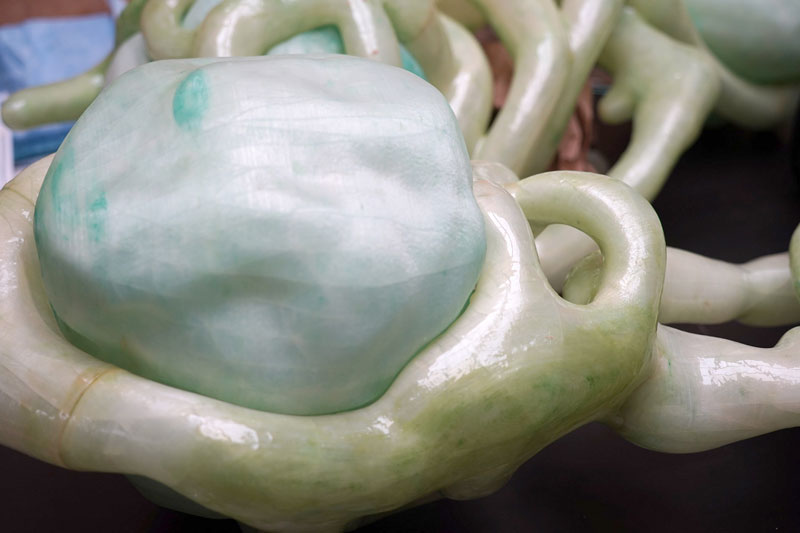
I had printed the algal bodies as separate spheres, and although they sat within the fungal hyphae in the blender file, in the real life object they didn’t fit very well (the tolerance between the objects was too tight…) . So I had to go back to the warm water bath and one at a time heat the spheres to a point at which they were quite soft, but just before they collapsed, so I could then force them into the right location. I had a test piece to work out the temperature, and it seemed that around 50 deg C was sufficient, but again, it depended on the sphere size and wall thickness, so I had to really operate by feel, when the ball started softening under my hands. Scary stuff!
Finally, once assembled I coated the fungal hyphae with a gloss product, to visually differentiate these elements. The product is called Smooth-On, which worked well,
filling the printer ridges to give a really nice gloss finish. It is fiddly to work with, you need gloves, disposable brushes, and don’t make up too much at a time. I learned by watching you tube videos, of course…
Surprising learnings:
A fabulous but too fast paced project, my timelines were too tight and I wish I’d had more time to experiment with algal PLA or other biofilaments. Also, I should have done more small 3D prints before getting to the full scale. There are design decisions I would have made differently, and I wished the whole thing was even more crazily organic.
Each form in final dimension was around 1.2 x 40 x 40 cm, so it needed to be printed in parts to fit the printer bed size. I hadn’t correctly worked out where the cuts should go and some cuts were in very awkward and highly visible sites. In fact, the cuts are a huge downside of larger scale PLA prints.
Dying the PLA was great fun, the alum mordant worked well, with a lovely organic and rich surface. I wish I had time to find a good and ethical bio-pigment to use instead of commercial fabric dye. Rhubarb root also contains parietin so maybe next time I could try that…
Penelope Cain
